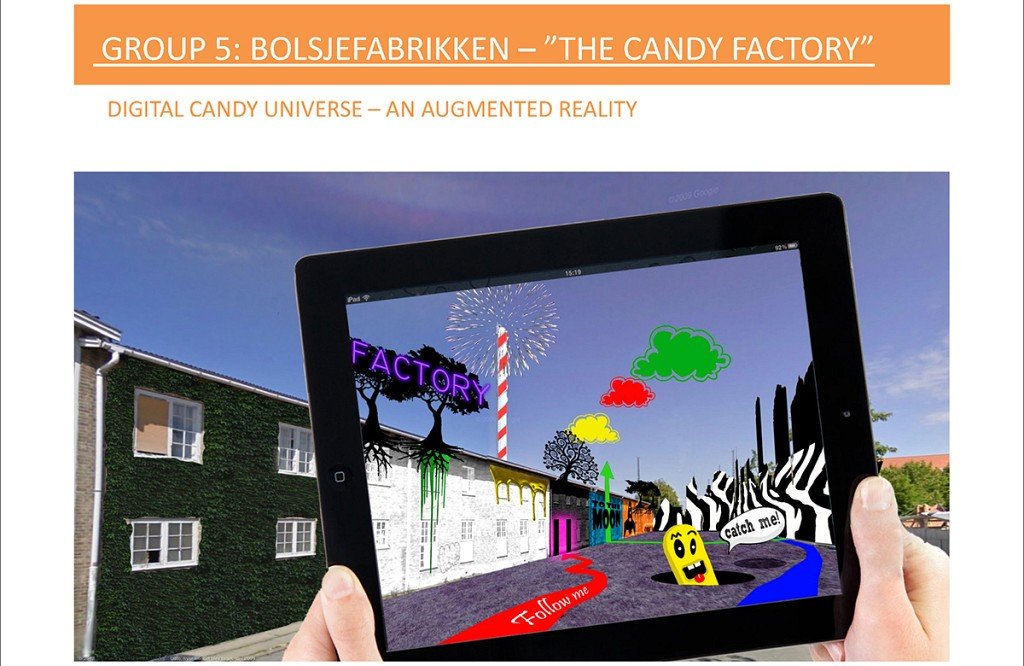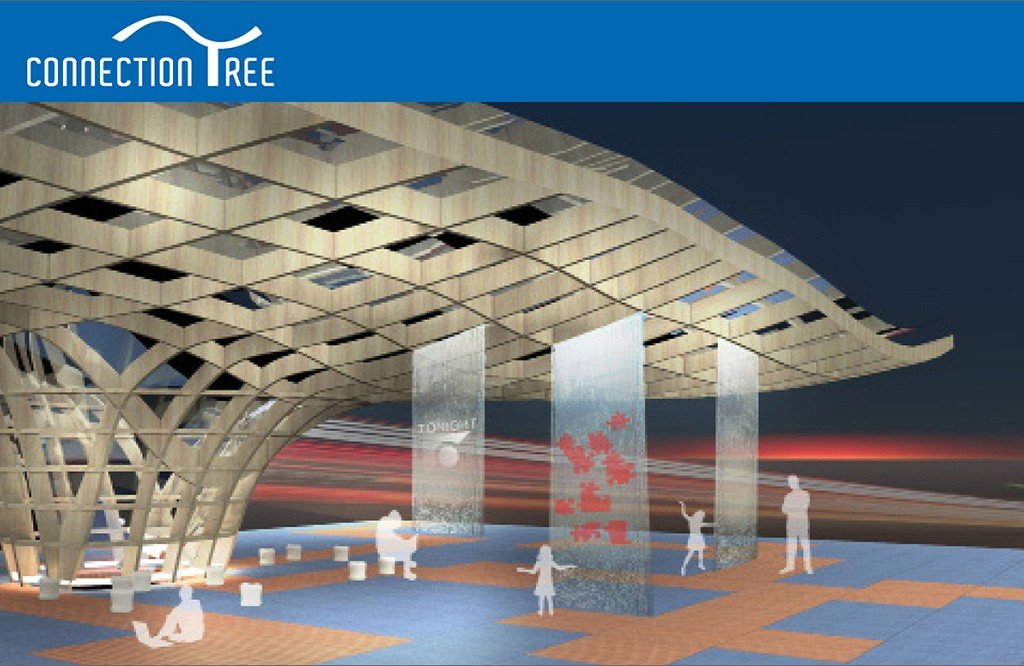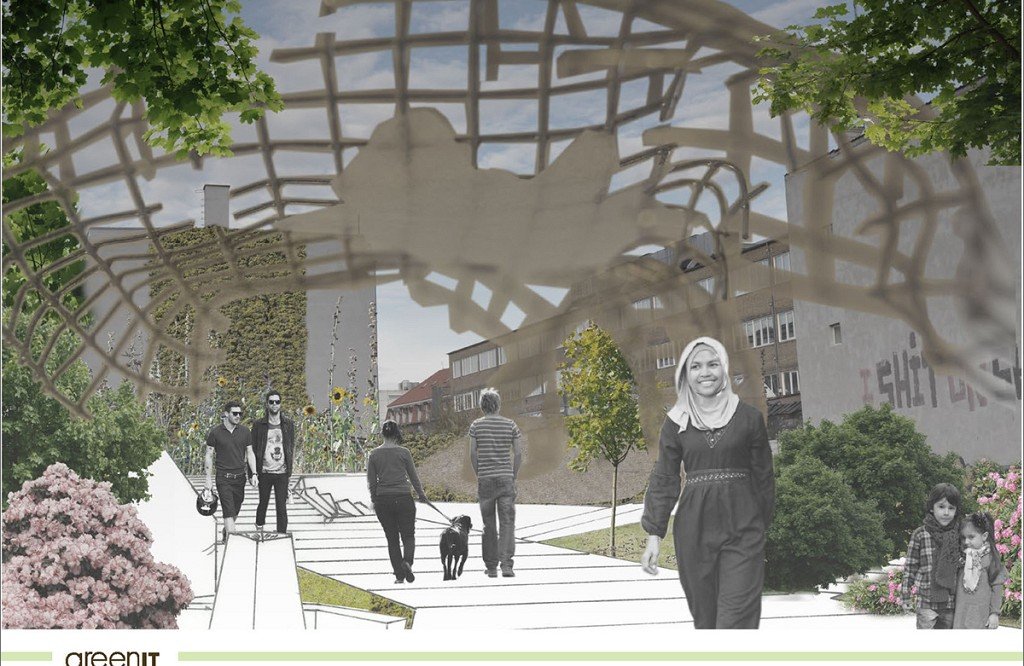Nørrebro's future in focus.
KEA Charrette 2012
A spacious new recreational park with a focus on movement, a sense garden for the blind, art that flows out from the surrounding buildings, and weaves its way into the cityscape. Copenhagen City Council and the local business community were impressed by the quality of the students work, enthusiasm and productivity when 60 KEA and international students presented the results of a one week intensive workshop. The projects were the result of an interplay between architecture, experience economy and digital lifestyle with a specific focus on sustainability.
Nørrebro as starting point
The Charrette was held in Nørrebro, taking inspiration from the challenges that are to be found in and around the area: Nørrebro is the most densely populated area in Denmark as well as also being the most colourful and ethnically diverse. The Charrette’s title and focus ”Transformation through Connection”, in addition to addressing the future completion of the new metro stations also was concerned with how these new connections will interact with other geographic and digital interfaces. All of these challenges and opportunities were researched and investigated by the students during the intensive week of work.
Support by Sustania
Sustainia’s Business Development Director, Meik Wiking, got the students off to a great start when he delivered his inspiring keynote speech and got them up and running with their brainstorming processes. The speech was full of inspiring examples of sustainable city development. The KEA Charrette is supported by Sustainia that primarily works to develop and communicate a realistic vision of a sustainable society that could be achieved before 2020.

Inviting the business community to participate
Feedback sessions were included on three of the five days of the event, where architects, town planners, interaction designers, digital designers and other individuals with relevant expertise were invited to come and give the students constructive feedback on their work. This served the purpose of both refining the ideas during the development process and resulted in a valuable experience for both advisors and students. Rune Kirt from the design and innovation company Kirt-Thomsen ApS said, “It’s a gift, to be able to dig down into the students’ creativity and productivity, and see the interplay of the varoius professions unfold”.

The winning project
The winning project is to be included in a new book and also presented at a meeting for the local community
The jury, that consisted of representatives from Copenhagen city council, KEA’s lecturers, and international lecturers, were particularly impressed by the Candy Factory project. The jury described the project as a professional and holistic solution based on user involvement. A concept that dares to be both playful and wildly organic within a realistic frame of reference. Birgitte Kortegaard, project manager for the Haraldsgade Quarter regeneration project, said that she would include the proposal in a book project and also invite the winning group to present their proposal at a large council meeting for the local community.
What is a Charrette?
A Charrette is an intensive, collaborative process that brings together students from many professional and cultural backgrounds, community members and professionals to develop innovative solutions for complex issues. The concept for the event was inspired by a Charrette held by George Brown College and facilitated by Institute without Boundaries. Both students and lecturers from KEA participated in the event during the spring of 2011 and 2012.
KEA intends to host an annual interdisciplinary and intercultural educational event using the Charrette format, because it was clearly felt that when working at these interfaces between professions, institutions and cultures that learning and innovation come into their own. Yrsa Gregersen, Head of International Relations at KEA, and Herman Bailey, lecturer in Multimedia Design and Communication at KEA, who together with other lecturers have worked hard to get the Charrette off the ground, were both very happy and satisfied with the successful result.
A successful event
Both the project stakeholders and the students were proud to present and discuss their project proposals at the final presentations that took place 19th October 2012.
Follow the image links to get a glimpse of the intensive development process that took place during the 5 day event.

Project background
With the coming metro ‘City Ring’, several ‘Quarters’ located on the fringes of Copenhagen will have a new level of connectivity with the rest of the city, transforming the way people can come to/from those areas. These connections will initiate other transformations that could bring great opportunities to the local communities. However, exploiting those opportunities requires focus, patience and determination.
A number of primary locations were identified in collaboration with Copenhagen City Council and the local communities that will form the focus areas to be allocated to the interdisciplinary teams.
The teams of students worked together for 5 days to develop a proposal for an interactive digital/physical solution that facilitated a more sustainable and engaging way of ‘living in’ and ‘interacting with’ the locality. Each team was advised by professional experts in digital technology, urban issues, society and sustainable living.
KEA Charrette 2012 Overview
53 Students
Architecture
Architectural Technology
Design Technology
Graphic Design
Multimedia Design
5 Schools
Beuth Hochschule für Technik, Berlin
Chalmers Tekniska Högskola, Göteborg
George Brown College, Toronto
Politecnico di Milano, Milano
KEA, Copenhagen
5 Countries
Canada
Denmark
Germany
Italy
Sweden
30 Expert Advisors
About the Author


